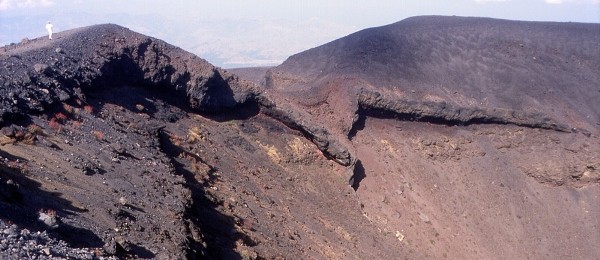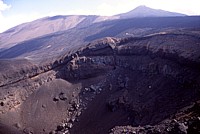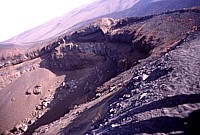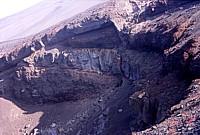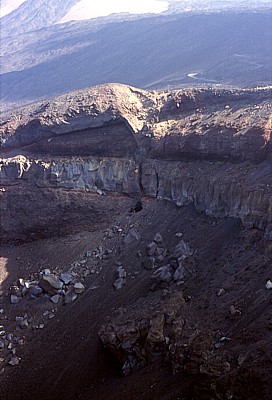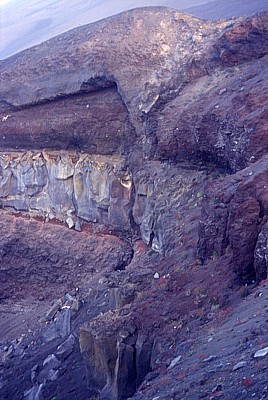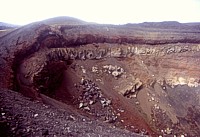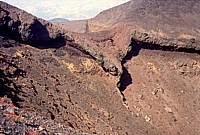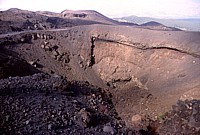| Etna
index |
||
| Geology | Geological history | Cones and craters |
| Eruptive characteristics | Eruptions before 1971 | Eruptions since 1971 |
| Etna and Man | References | Web sites |
| Weather forecasts | FAQ | Latest news |
Mamma
Etna's countless children
1809 craters
NE flank, 15.011839° E, 37.786377° N
Summit elevation: ~2390 m (SW crater rim)
![]()
Among
the most spectacular of the numerous craters on the Northeast Rift are
two huge pits with low pyroclastic rims that were formed during a brief
but powerful eruption in 1809. They lie at a maximum altitude of about
2390 m and form, together with two smaller craters further downrift, the
central segment of an eruptive fissure system that extended from near
the summit down to about 1350 m elevation, over a total length of 10 km.
Strong explosive activity took place in the central section of the fissure
system, leading to the formation of the craters described on this page.
The 1809 craters, and in particular the largest and uppermost of them,
provide interesting insights into the dynamics of the opening of an eruptive
fissure and its later evolution into distinct craters. The crater walls
show in their lower portions an alternation of pyroclastic deposits and
lava flows that pre-date the 1809 eruption, extending back to the Ellittico
stage of Etna that ended about 15,000 years ago. This pre-1809 succession
is cut by a vertical fissure about 2 m wide, which is partially filled
by lava and marks the position of the dike that rose to the surface at
the beginning of the 1809 eruption. This is actually how most flank eruptions
at Etna begin - magma rises through a narrow dike that propagates downslope;
the initial activity occurs at numerous small vents along an eruptive
fissure, forming "curtains of fire" as in many eruptions on
Hawaii. As the eruption continued, the activity began to concentrate in
fewer places where it grew more intense, blowing out pre-existing material
and thus forming larger craters. The deposit laid down during this phase
contains abundant lithic blocks consisting of the pre-existing material
blown out as the craters enlarged; intermittent episodes of lava fountaining
produced deposits of more or less welded scoriae that transformed sometimes
into clastogenic flows. In the final phase of the eruption, intermittent
explosions threw out large lithic blocks which lie scattered on the surface
around the craters.
I made many visits to the 1809 craters starting in August 1989, but most
of the photographs on this page were taken in June-July 1999. During the
devastating eruption that started in late October 2002, new vents opened
very close to the 1809 craters; some of these show a very similar sequence
of events as those documented in the spectacular outcrop of the largest
of the 1809 craters.
Copyright © Boris Behncke, "Italy's Volcanoes: The Cradle of Volcanology"
Page set up on 23 February 2004

